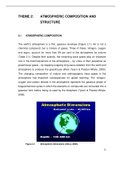Value
Management
Summary of the Seminars
Given in: 2021/2022 | Summary by LouisT
,Contents
Chapter 1. Micro Devices Division + Holzhacker ................................................................................... 5
1.1 Micro Devices Division............................................................................................................ 5
1.2 Holzhacker et al. (2015) .......................................................................................................... 8
1.2.1 Hypotheses...................................................................................................................... 9
1.2.2 Data & Method ............................................................................................................... 9
1.2.3 Results ........................................................................................................................... 11
Chapter 2. Kanthar Case + Casas-Arce ................................................................................................. 13
2.1 Kanthar Case ......................................................................................................................... 13
2.2 Paper Casas-Arce .................................................................................................................. 15
2.2.1 Background ................................................................................................................... 15
2.2.2 Hypotheses.................................................................................................................... 16
2.2.3 Data Method ................................................................................................................. 16
2.2.4 Results ........................................................................................................................... 17
Chapter 3. HBS Chemicals + Cassimon et al. (2016) ............................................................................ 18
3.1 HBS Chemicals ....................................................................................................................... 18
3.1.1 Part 1: Comparing internal and outsourced operations.............................................. 18
3.1.2 Part 2: Comparing internal and outsourced operations.............................................. 20
3.2 Cassimon et al. (2016) .......................................................................................................... 22
3.2.1 Summarize the paper and what is it about? ................................................................ 22
3.2.2 Research Method .......................................................................................................... 23
3.2.3 Key Results .................................................................................................................... 23
3.2.4 Conclusions ................................................................................................................... 23
Chapter 4. Endius + Henri & Wouters (2020) ....................................................................................... 25
4.1 Endius .................................................................................................................................... 25
4.2 Henri & Wouters (2020) ....................................................................................................... 31
4.2.1 Summary of the paper .................................................................................................. 31
4.2.2 Research method .......................................................................................................... 32
4.2.3 Results ........................................................................................................................... 32
4.2.4 Conclusions ................................................................................................................... 33
Chapter 5. BSC + Groen et al. ............................................................................................................... 34
5.1 Balanced Scorecard (Chadwick) ........................................................................................... 34
5.2 Groen et al. ........................................................................................................................... 36
5.2.1 Research method .......................................................................................................... 36
5.2.2 Results ........................................................................................................................... 36
Chapter 6. King Projects + ToolCo ........................................................................................................ 37
A Summary by LouisT on Stuvia.nl | Thank you for your purchase | Version 2.0 (Final)
, 6.1 King Projects ......................................................................................................................... 37
6.1.1 Competitive Environment + Managerial Issues ........................................................... 37
6.1.2 Job Costing .................................................................................................................... 37
6.1.3 Project Report ............................................................................................................... 37
6.1.4 Q2 Interpretation of Table B.1 ..................................................................................... 38
6.1.5 Q2 Interpretation of Table B.2 ..................................................................................... 39
6.1.6 Q2 Interpretation of Table B.3 ..................................................................................... 40
6.1.7 Classification Tree ......................................................................................................... 41
6.2 Goretzki et al. (2018) ............................................................................................................ 44
6.2.1 Research problem ......................................................................................................... 44
6.2.2 Literature....................................................................................................................... 44
6.2.3 Conclusion ..................................................................................................................... 45
A Summary by LouisT on Stuvia.nl | Thank you for your purchase | Version 2.0 (Final)
,Chapter 1. Micro Devices Division + Holzhacker
1.1 Micro Devices Division
The market Micro Devices Division operated is very price
sensitive. However, their strategy is to compete with
quality rather than price. They have to focus on quality
because they are selling this product to their parent
company as seen on the right. However, as proprietary
knowledge comes public, severe competitive pressure
arises.
The parent company has a stake in Micro Devices Division
mainly for their good quality chips and partially to receive
dividends. However, a downside for Micro Devices Division
is that they can not deliver to other competitors.
Products manufactured by MDD are given a number,
based upon criticality:
• Proprietary
• Can consider a second supplier
• Can buy from anyone
New business was won because it was proprietary. As proprietary technology becomes public, MDD
faces severe competitive pressures as lower-cost suppliers enter the market. In addition, excess
capacity is caused by unexpectedly high yields. Lastly, the strategy of the parent forbids using the
excess capacity for commodity chips.
Transfer Pricing
As it is between a daughter company and a parent company, there is Transfer Pricing. If the price is
too high, the parent would buy elsewhere, while MDD can only sell to the parent. They do get the
provision of technology. If MDD would allocate the excess capacity to the product price, it would
increase the transfer price. Here we have the so-called death spiral pricing, as the prices would be
out of the market. Therefore, if the parent wants the excess capacity, then this parent should pay.
In addition, MDD transfers at full cost. However, there is some leeway in determining which costs to
include in the transfer price (Sometimes only marginal costs are included). However, there might be
some issues as you have a high cost, low demand, which created high prices. But at the top, you have
a high cost, high demand so low prices. Using Yield Accounting
Production Process
5
A Summary by LouisT on Stuvia.nl | Thank you for your purchase | Version 2.0 (Final)
, Cost System
MDD uses yield accounting. Direct labor, direct material, and scrap costs are traced directly to wafer
lots. The overhead rates were developed for each department and allocated to wafer lots based on
actual DL dollars. The cost of the wafer lot was divided by the actual number of good die in the lot.
Lastly, packaging and test costs were developed similarly.
We have the costs and divide them by the number of products. However, there are fluctuations in
the demand.
How should MDD allocate capacity costs and use cost information in order to improve the decision
making process on MDD’s use of (excess) capacity?
A large percentage of the overhead is fixed (77% of product costs in overhead and 53% of
department cost is fixed overhead). So these overheads are the capacity costs. This can make you
determine whether or not you are profitable.
6
A Summary by LouisT on Stuvia.nl | Thank you for your purchase | Version 2.0 (Final)











